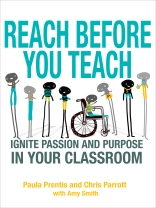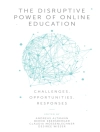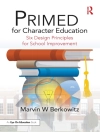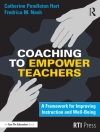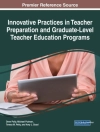Facilitating students’ unique paths towards identity development is the key to teaching young teens.
Students face pressures that undermine the development of a solid sense of self, jeopardizing success in school and in life: Family issues, economic concerns, media influences, social pressures, physical changes, and more influence how students feel about themselves.
When these go unnoticed, even the best teaching methods fall short. Reach Before You Teach shows educators how to form the nurturing, individualized connections that make students feel worthy, fulfilled, and ready to flourish as learners.
The book details:
- Practical, empowering information about how a sense of self comes to be, and what threatens it.
- Interventions that soften the myriad defenses students develop to protect themselves.
- How to address the often-overlooked connections between physical, social, and emotional health and classroom performance.
Packed with real-life examples and results-delivering exercises, Reach Before You Teach supplies educators with the all-important skills to connect with students so academic and life success feels more attainable.
‘In our present education system that seems to be caught up with numbers and standardization, this book is a welcomed read. Education will never improve if we don’t make the social-emotional skills of children our first priority.’
—Peter De Witt, Principal
Poestenkill Elementary School, NY
‘This book is a must-read for all who want to encourage self-awareness and self-reflection during classroom instruction and help students feel more connected, curious, and confident! Students no doubt will achieve emotionally and academically with help from the strategies in this book.’
—Dr. Ann Marie Dargon, Assistant Superintendent of Schools
Westport Community Schools, MA
विषयसूची
Preface
A Child’s Sense of Self Is of Paramount Concern
The Focus and Purpose of This Book
This Book Applies to Educators of Teens
The Bottom Line
About the Authors
1. The Self
What You Will Learn in This Chapter
What Do We Mean by the Self?
The Self in School
Social Emotional Learning: Its Importance and How the Self Enables SEL Potential
How Does a Sense of Self Contribute to Personal Success and to Society?
Steps to Success – For Teaching and for You
Chapter Summary
2. The Development of the Self: Understand and Connect With the Self Behind the Desk
What You Will Learn in This Chapter
Early Attachment and Self Development
True Self Versus False Self: The Battle Begins
Making Connections
Chapter Summary
3. The Unaware Emotional Self: Soften Defenses to Foster Academic and Personal Growth
What You Will Learn in This Chapter
The Purpose of Defenses
The Development of Defenses and How They Inhibit Optimal Learning
Common Defense Mechanisms and How They May Manifest in the Classroom
How to Manage Defenses Through Interventions That Build the Self
Chapter Summary
4. The Aware Emotional Self: Provide Tools for Emotional Management
What You Will Learn in This Chapter
Emotional Awareness – Knowing Your Temperature
Emotional Management – Shutting the Window
The Emotional Self in the Classroom
The Benefits
Chapter Summary
5. The Cognitive Self: Use Cognitive Understanding to Awaken Potentials
What You Will Learn in This Chapter
Brain Structure and Related Functions
Stress on the Brain
Neuroplasticity: The Role of Experiences
Improving Motivation
Chapter Summary
6. The Social Self: Consolidate the Self in the Social World
What You Will Learn in This Chapter
Set a Positive Social Tone in Your Classroom
Top Social Skills
Teamwork
Chapter Summary
7. The Physical Self: Support the Physical Self for Optimal Overall Health
What You Will Learn in This Chapter
The Importance of Physical Health
Exercise and Health
Nutrition and Health
Sleep and Health
The Mind/Body Connection
The Physical Self in the Classroom
Chapter Summary
8. The Self in the School Climate: How to Put the Environment to Work for You
What You Will Learn in This Chapter
What Is School Climate?
Personal Principles of Behavior
School Wide Policies
Parents and the Off-Campus Community
Chapter Summary
9. The Self: Decision-Making, Motivation, and Giving Back
What You Will Learn in This Chapter
Where Are We?
Where Can We Go From Here?
Decision-Making – The Sine Qua Non of Self Skills
Motivation
Final Interventions
Chapter Summary
References
Index
लेखक के बारे में
Amy Smith was a high school English teacher for over 15 years in the states of Texas, California, and New Jersey, which gave her a diverse experience within the educational sector and a broad spectrum of teacher contacts. Working as an English teacher and, later, as a media specialist for another 15 years, Smith′s primary focus was always on the individual spirit of each student who passed through her doors–or walked onto her court: She acted as a tennis coach for several years alongside her teaching. Indeed, her passion for her students led her to numerous conventions and professional development seminars over the years where she expanded both her knowledge and contacts. Now retired, Smith enjoys time with her partner, two daughters, and grandson while continuing to look for opportunities to positively affect teen education.
